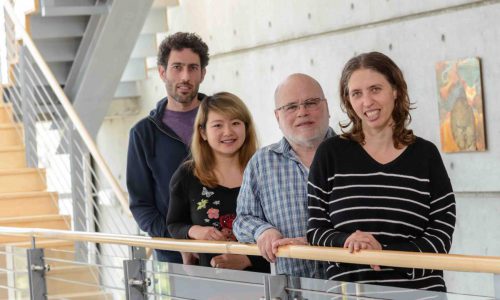The scientists of the Weizmann Institute of Science recently discovered that the fierceness of the forehead is even more impressive than they thought until now: the viruses take advantage of a mechanism designed to protect the cell, to make it their own without resistance

Viruses can be quite rude guests - they feel at home in the host's cell, take over its equipment and use it for their own purposes to produce new viruses. The scientists of the Weizmann Institute of Science recently discovered that the fierceness of the forehead is even more impressive than they thought until now: the viruses take advantage of a mechanism designed to protect the cell, to make it their own without resistance. The findings, published in the scientific journal Nature Immunology, provide new insights into the complex relationship between the host cell and the virus, and may lead to new research on ways to treat infections or faulty immune responses.
Messenger RNA molecules (mRNA) that contain the genetic instructions for building proteins, may undergo, after their production in the cell nucleus and before reaching their destination, chemical change processes (modifications) that affect their function. Dr. Noam Stern-Ginoser and her research group in the department of molecular genetics at the institute studied one of the most common change processes - methylation of the adenosine nucleotide (m6A). This process involves an enzyme that connects a methyl group (marked with the letter m) to a specific site on the RNA molecule (6A). Previous studies have reported that m6A plays a role in the viral infection mechanism. Accordingly, when the researchers injected the giant CMV virus into human cells grown in the laboratory and neutralized the enzyme responsible for methylation, they found that the spread of the virus stopped.

From the right: Dr. Noam Stern-Ginosar, Aharon Nachshon, Julie Tai-Schmidel and Roni Winkler. uninvited guests
To deepen the knowledge of the infection mechanism, the researchers, led by research student Roni Winkler and in collaboration with Dr. Shraga Schwartz and his research group, created two types of cells: normal cells and cells without RNA methylation. The researchers infected them with the virus, and mapped the sites on the viral RNA that were exposed to m6A. The researchers expected to see differences in the viral RNA, but when they compared these molecules in the engineered cells to the molecules in the normal cells, they were surprised to find that there was no difference between them. On the other hand, a significant difference was discovered in the RNA of the cells themselves: in the engineered cells, a much stronger expression of genes with antiviral activity was found.
The findings were very surprising: why would "normal" cells contain a mechanism that allows viruses to multiply and spread themselves? Later, the researchers discovered that the methylation occurred mainly in the DNA of the gene that codes for the antiviral substance interferon. Interferon is the body's first line of defense against infections - a powerful, but also wide-ranging, antiviral weapon. "Every cell in our body has sensors that can detect a virus and release interferon in response," explains Dr. Stern-Ginoser. "This mechanism is part of the innate immune system, and it affects both the attacked cell and its neighbors and stops the infection as best it can, until the acquired immune system manages to recognize the virus and learn how to fight it."
After further experiments, the scientists proposed a possible explanation for the improved success of the virus specifically in the normal cells: the methylation process reduces the production of interferon. "Interferon, like most substances produced by the immune system, is toxic. Too much of it can kill the cell," explains Dr. Stern-Ginoser. "So there is a constant trade-off between fighting the virus and protecting the host cell. Because the amount of material produced is crucial, it has very quick 'off' and 'on' switches. We estimate that m6A acts as an 'off' switch - without it, interferon is continuously produced, and the spread of the virus is almost completely stopped."
In collaboration with Prof. Yaacov Hana, the researchers created transgenic mice and discovered that the findings in the cell cultures were also repeated in the living body: in the transgenic animals, the interferon levels rose to dangerous levels, but the virus infection stopped.
"We believe that a large part of the researchers who report on m6A as a modification in the viral DNA for the purpose of its cultivation, actually observed viruses that take advantage of the defense mechanism in the host cells - a mechanism that leaves the surviving viruses a window of opportunity to replicate," says Dr. Stern-Ginoser. "Our findings create a general picture of the early stages of a viral infection which may lead to new ideas for the treatment or prevention of viral diseases." In addition, the findings may provide insights into certain autoimmune diseases, inflammation and regulatory mechanisms of substances such as interferon, which require strict control.
